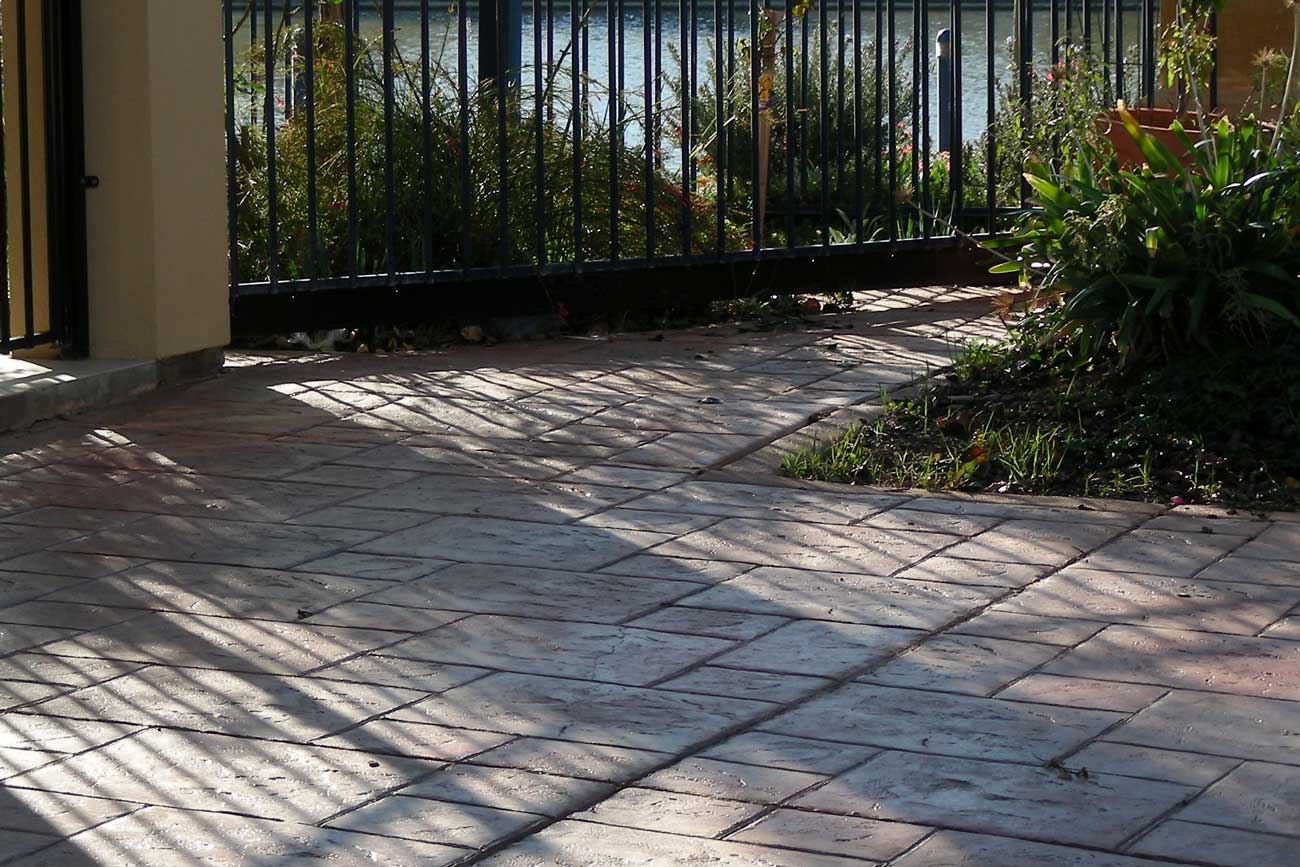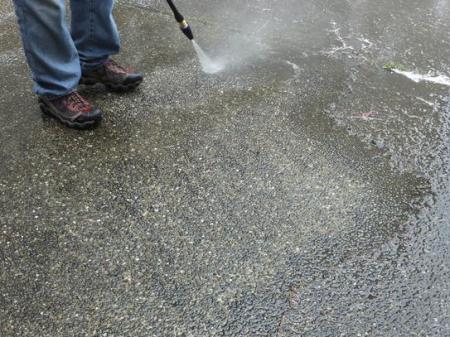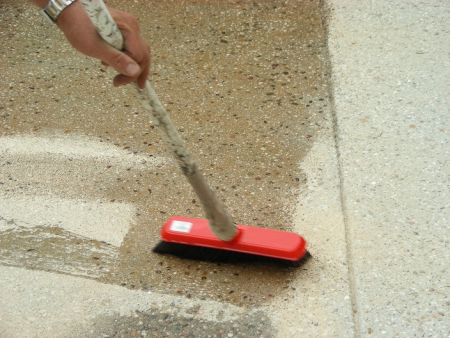
Concrete is a durable product – as they say, once you’ve set it in concrete, you’ve set it for good!
As durable as it is however, decorative or stamped styles need a little bit of concrete maintenance and there are some things you can do yourself at home that will keep your concrete looking good over many years.
Decorative concrete paving can do with a good regular cleaning. A garden blower will often get most of the coarse and finer particles off the paving, but if a more thorough clean is required, a high pressure hose will clean them up very well.
Concrete maintenance tips on cleaning your decorative paving
- If oil or other contaminants are present, use a stiff brush and a general purpose cleaner before rinsing off well
- Sometimes a light acid wash using approx 20 parts water to one part hydrochloric acid will help remove dirt and grime
- When using a high pressure cleaner, it is a good idea to wear eye protection
- Be aware of where the water is flowing. It is best to ensure that the water is pushed on to a garden bed or lawn, not on to the road or into a storm water drain
- Use a high pressure hose in a sideways motion fanning out across the paving.


Resealing – to be or not to be? A good concrete maintenance question!
There are no firm rules about when or if your paving will need to be resealed. It depends on how particular you are about your concrete’s maintenance. People who prefer a natural and weathered look will never need to reseal but there are some benefits to resealing concrete paving every few years.
- Every surface will fade under the Australian sun and a reseal can enhance and brighten the colour, bringing the paving back as close as possible to the original
- A reseal makes the surface easier to clean. Staining is reduced and any stains that do occur are more easily removed
- Resealing makes paving easier to sweep which we all need to do after a night or day of entertaining
- Soil and mulch sitting on top of paving during a garden makeover or renovations can wear away or smear the original sealer. You may need to reseal again if this is the case
Tips on resealing your concrete paving
Once you have cleared the paving of loose refuse and wash it, you must leave it to dry completely before you apply a sealer. This will take at least a day depending upon the time of year.
When sealing the concrete, the following is recommended:
- Apply a thin coat of sealer onto the paving using a circular motion
- Work well into the top of the paving to ensure a good bond
- After the first coat has been left to dry another thin coat can be applied
Maintaining your concrete can be a little more tricky on sloping areas when it comes to using a sealer, because the sealer might start to run down the paving leaving visible tracks. In these cases, use smaller amounts of sealer and spread quickly using the circular motion.
If too much sealer is used in one coat, it will be too thick to bond properly to the paving underneath. The most important thing to remember when sealing paving is that less is more. A thin coat will bond much better to the concrete paving underneath. Therefore it is best to apply a thin coat of sealer, allow it to dry properly, and then apply another thin coat.
We hope you put our concrete maintenance tips to good use!
Buy AVISTA Sealer from Panorama Concrete
Visit us at our showroom in Forestville Adelaide where we have a full range of Avista sealers in 20 litre tins.
We have coloured tints, water based sealers and primers. And we will give you advice on how to best seal your concrete paving and other general tips on concrete maintenance.
Or, you can call us on (08) 8297 9611.
